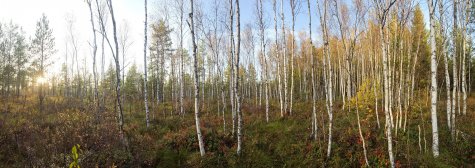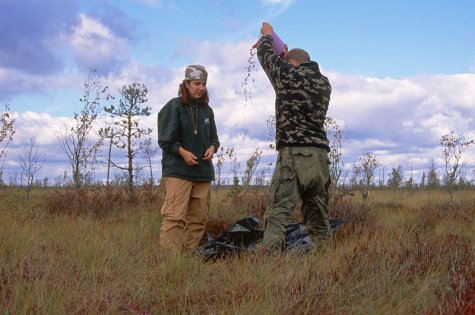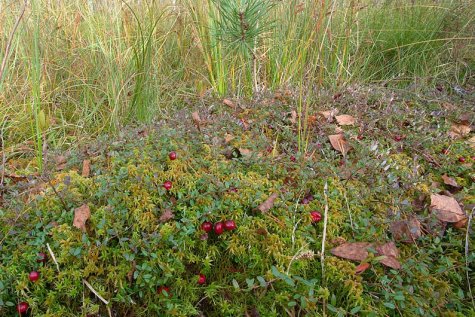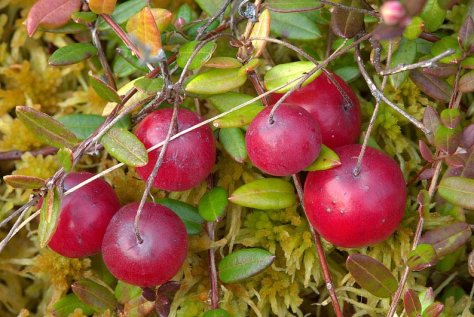Berryland of Marjassaare
Text and photos Arne Ader
Translation: Liis
Marjassaare berryland on October 1, 2014:a blue sky, green pines, yellow birches, red-leaved bilberries ...
In the 80’s of last century a rather particular tradition was added to the doings of our little circle of friends. In autumn we disappeared for a couple of weeks to the Laeva bog, picking cranberries. In daylight we picked berries. The nights we spent in the Lobudik, the Hovel – so we called the former forester’s house at Rehessaare. For us those bog-weeks meant exciting nature experiences, long hours with ourselves and also a substantial scholarship addition.
Among other things we got to know the Marjassaare berry land. It was located in the heart of the bog, between Rehessaar and Suur Peenar. The area was a strip of transition bog that circled the Marjassaar in a wide arc from the western side.
Sifting cranberries in Laeva bog on September 29th, 2002. Kristel Ader and Einar Tammur
In October this year I visited the well-known cranberry land again. The berry basket I left at home, a hefty camera bag came along instead.
The transition bog forest surrounding Marjassaar was extraordinarily beautiful: this year’s colourless autumn was full of colours at least here! Sky blue, pine green, the golden yellow of birches and blood red of bilberries carried the northern autumn mood in the best of ways. And that was not all: the sphagnum mosses, sedges, bog bilberries, lingonberries and reindeer lichens growing on the tussocks contributed to the autumn image in their own way.
There is no doubt that the name Marjassaar, Berry Island, refers to the wealth of berries. The berry-picking time here runs from bilberries to bilberries. In between come bog bilberries and lingonberries, hard on their heels cranberries. The last-named suffice for nibbling until next spring and even longer. This year too there are plenty of cranberries, but picking them would be somewhat hard work: many beautiful berries this time are hidden by the leaves of sedges.
A natural cranberry bed in the transition bog: on a birch trunk fallen into the bog a sphagnum moss carpet has grown and cranberry clumps have crept on to this.
From time to time I listened to discover the goose flocks flying across the bog. It only succeeded twice, the migration is not yet in full speed. At sunset I realised that this time among the autumn sounds of the berryland the high-pitched calls of berry-pickers leaving the bog were missing! I seemed to be the only human soul on this land ...
Marjassaar, far away from roads, is no longer attractive to modern-time berry pickers. It is of course more sensible to do one’s picking near a plank road or a motor way. There is less risk of losing one’s way and bringing the berries home is likewise easier.
The cranberries of Laeva bog are richly varied in shape: large and small, round and drop-shaped, pink and dark red berries occur. In the photo a cranberry variety with large round pinkish red berries
From my student days I remember how we lugged our berry bags out from the bog – one bag we carried on the back with the backpack, the second went crosswise on the backpack and the third had to be carried on the stomach and held with one’s hands! From that time I still remember a metallic cadence that sounded from the chest of Olev who had had a cardiac surgery. We had stopped on the winter path trampled in the mud to catch our breath. From several meters away the beat of a heart valve could be heard. And up there in the sky the geese were flying, shrilly calling ...
See Arne’s photos from Marjassaar: LINK
Cranberry: LINK
Looduskalender’s Alam-Pedja stories are supported by the Environmental Investment Centre, Keskkonnainvesteeringute Keskus.












